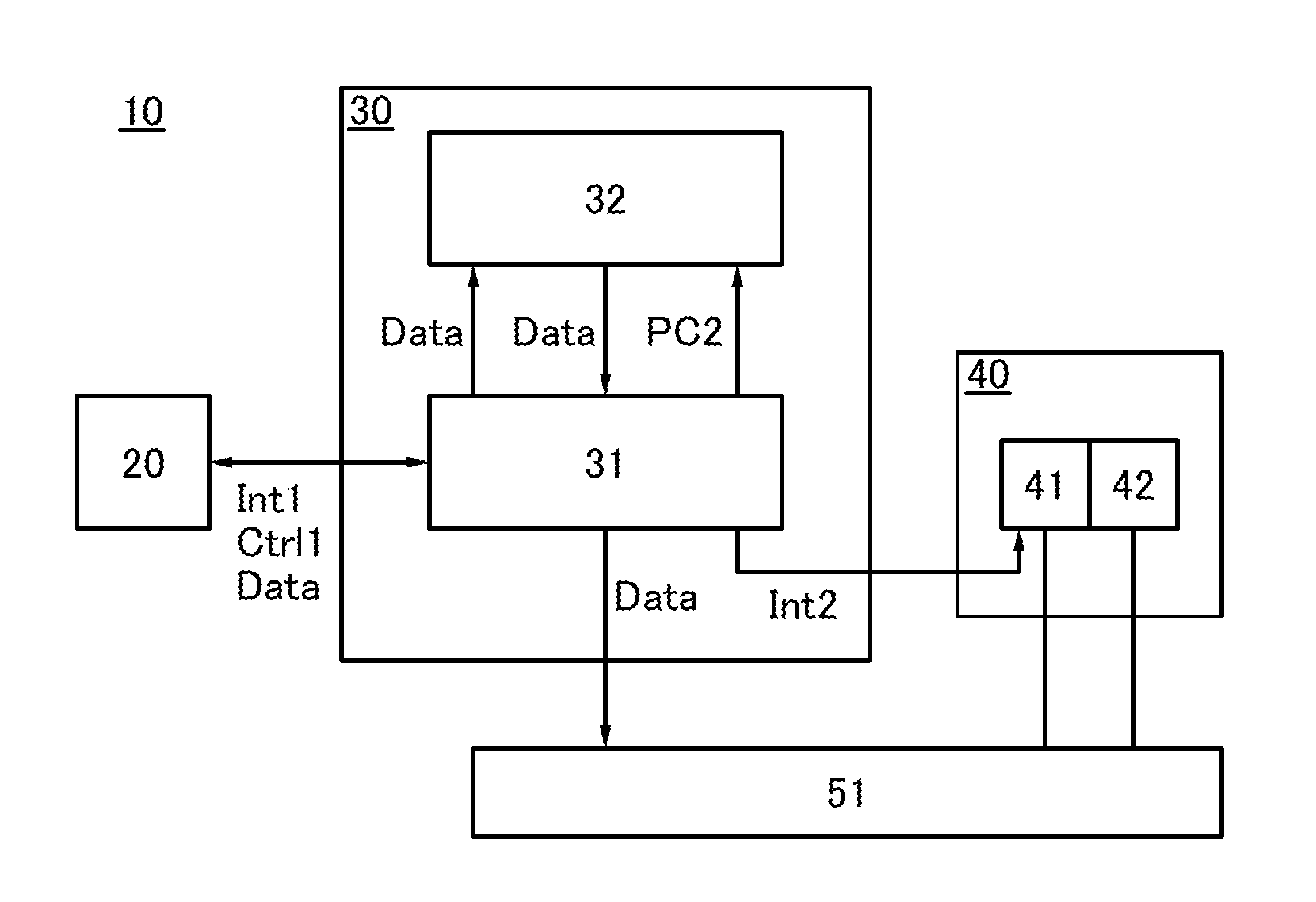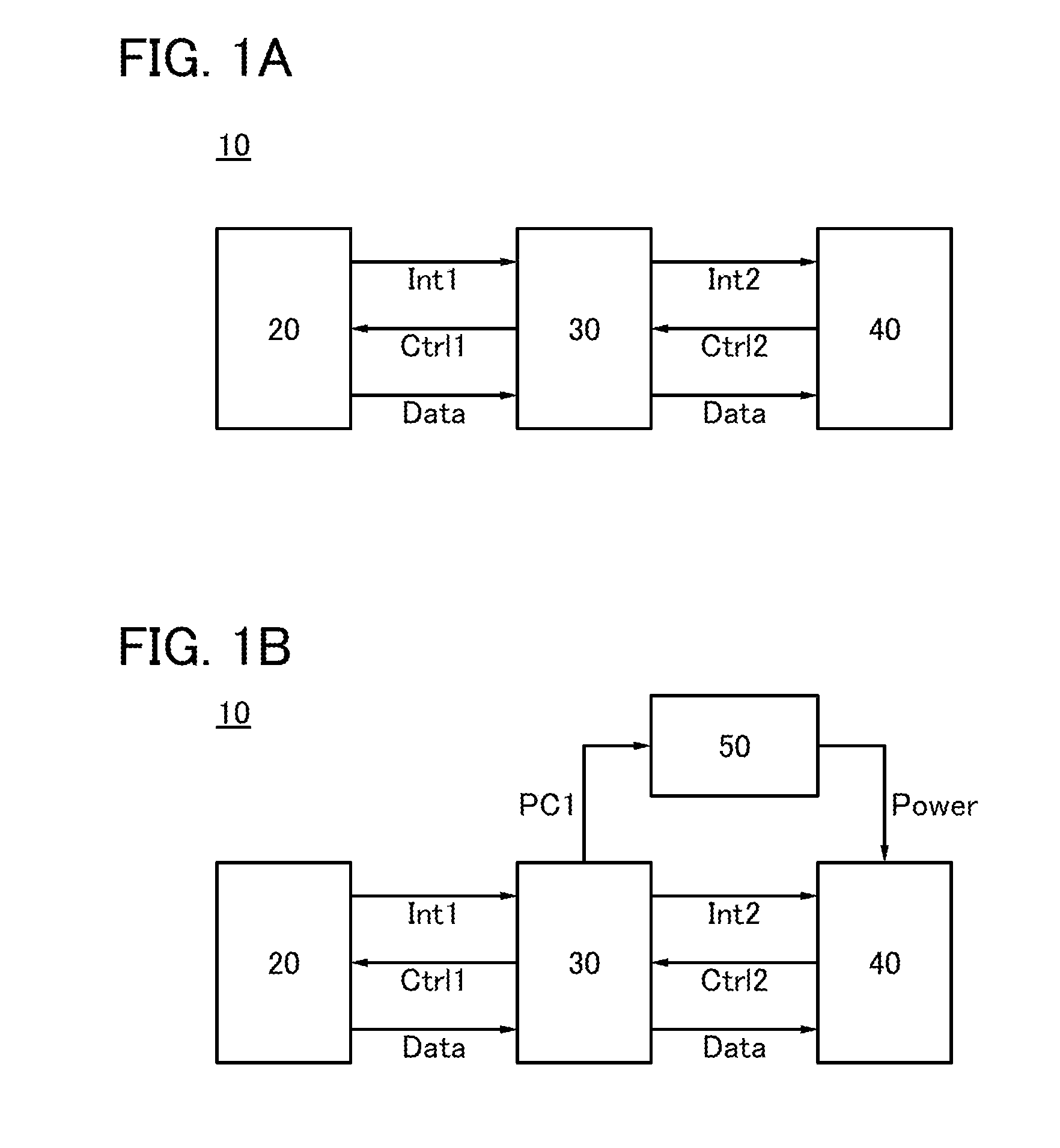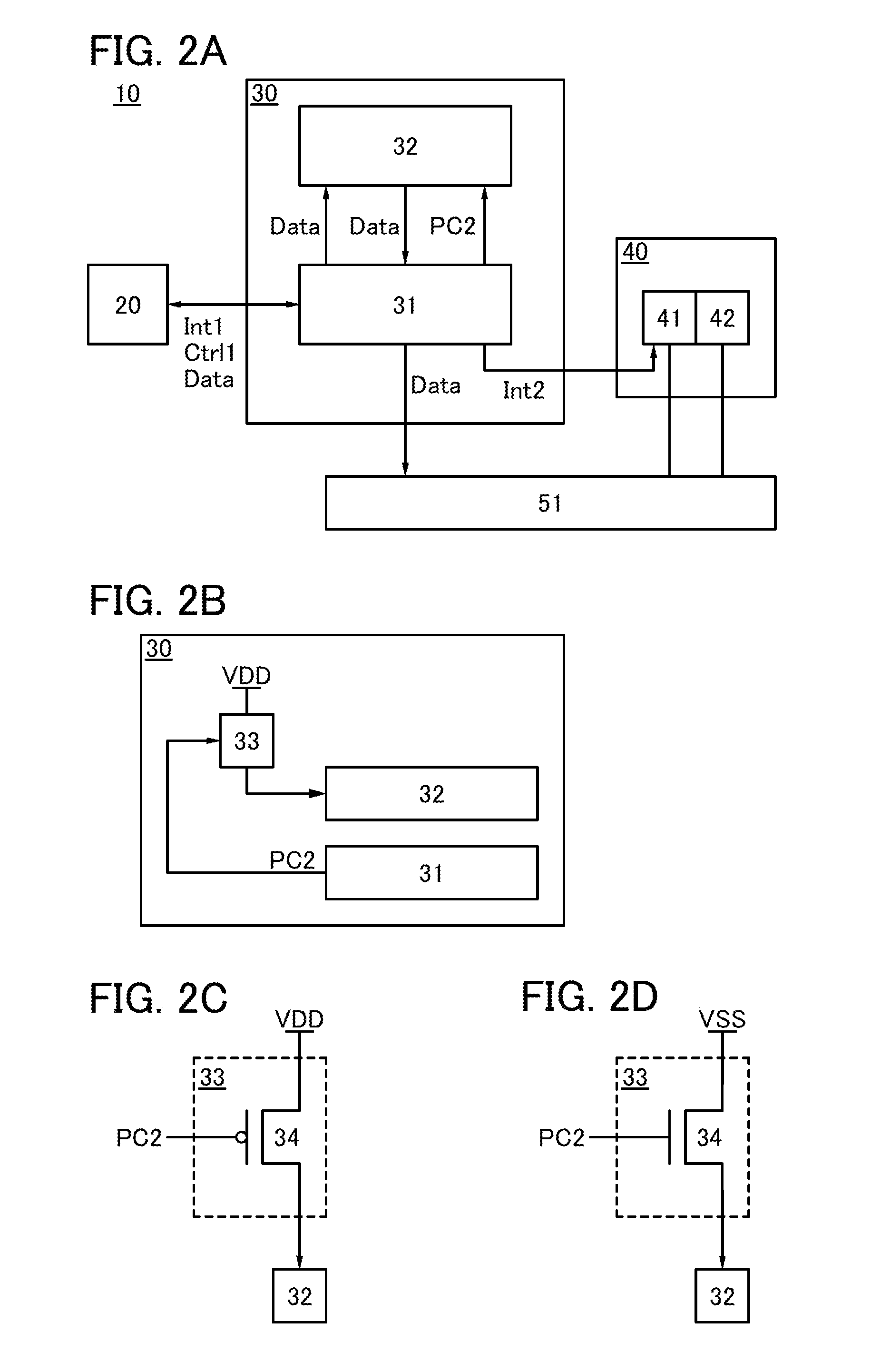Semiconductor device, sensor device, and electronic device
- Summary
- Abstract
- Description
- Claims
- Application Information
AI Technical Summary
Benefits of technology
Problems solved by technology
Method used
Image
Examples
embodiment 1
[0058]In this embodiment, a configuration example of a semiconductor device of one embodiment of the present invention will be described.
[0059]FIG. 1A illustrates a configuration example of a semiconductor device 10 of one embodiment of the present invention. The semiconductor device 10 includes a sensor portion 20, a memory portion 30, and a control portion 40. The memory portion 30 is connected to the sensor portion 20 and the control portion 40. The semiconductor device 10 can be used as a sensor device.
[0060]The sensor portion 20 is a circuit which has a function of acquiring information from the outside. Specifically, a sensor which has a function of acquiring a predetermined physical or chemical quantity can be provided in the sensor portion 20.
[0061]Here, the physical quantity refers to temperature, pressure, flow rate, light, magnetism, sound wave, speed, acceleration, humidity, current, voltage, electric field, electric power, distance, angle, or the like. The chemical quan...
embodiment 2
[0112]In this embodiment, a specific configuration example of the memory portion 30 of one embodiment of the present invention will be described.
[0113]FIG. 6 illustrates a configuration example of the control circuit 31. The control circuit 31 includes a control logic 100 and a plurality of interfaces (IF 110, IF 120, and IF 130).
[0114]The control logic 100 has a function of controlling the transmission / reception of signals to / from the sensor portion 20, the memory circuit 32, and the control portion 40. Specifically, the control logic 100 has a function of controlling the operation of the IF 110 which has functions of sending and receiving signals to and from the sensor portion 20. Furthermore, the control logic 100 has a function of controlling the operation of the IF 120 which has functions of sending and receiving signals to and from the memory circuit 32. Furthermore, the control logic 100 has functions of sending and receiving signals to and from the control portion 40.
[0115]T...
embodiment 3
[0204]In this embodiment, an example of the cross-sectional structure of a semiconductor device of one embodiment of the present invention will be described.
Structure Example 1
[0205]FIG. 13 is a cross-sectional view illustrating a transistor 401, a transistor 402, and a capacitor 403. Note that the transistor 402 can be used as the OS transistors described in the above embodiments and the transistor 401 can be used as a transistor other than the OS transistors. In addition, the capacitor 403 can be used as the capacitors and the like described in the above embodiments. For example, the transistor 401 can be used as the transistors 341 to 346 and 362 in FIGS. 12A and 12B. The transistor 402 can be used as the transistors 304 to 306 in FIG. 10, the transistors 351, 352, 361, and 371 in FIGS. 12A to 12C, and the like. The capacitor 403 can be used as the capacitor 307 in FIG. 10, the capacitors 353, 354, 363, and 372 in FIGS. 12A to 12C, and the like.
[0206]FIG. 13 illustrates an exampl...
PUM
 Login to View More
Login to View More Abstract
Description
Claims
Application Information
 Login to View More
Login to View More - R&D
- Intellectual Property
- Life Sciences
- Materials
- Tech Scout
- Unparalleled Data Quality
- Higher Quality Content
- 60% Fewer Hallucinations
Browse by: Latest US Patents, China's latest patents, Technical Efficacy Thesaurus, Application Domain, Technology Topic, Popular Technical Reports.
© 2025 PatSnap. All rights reserved.Legal|Privacy policy|Modern Slavery Act Transparency Statement|Sitemap|About US| Contact US: help@patsnap.com



